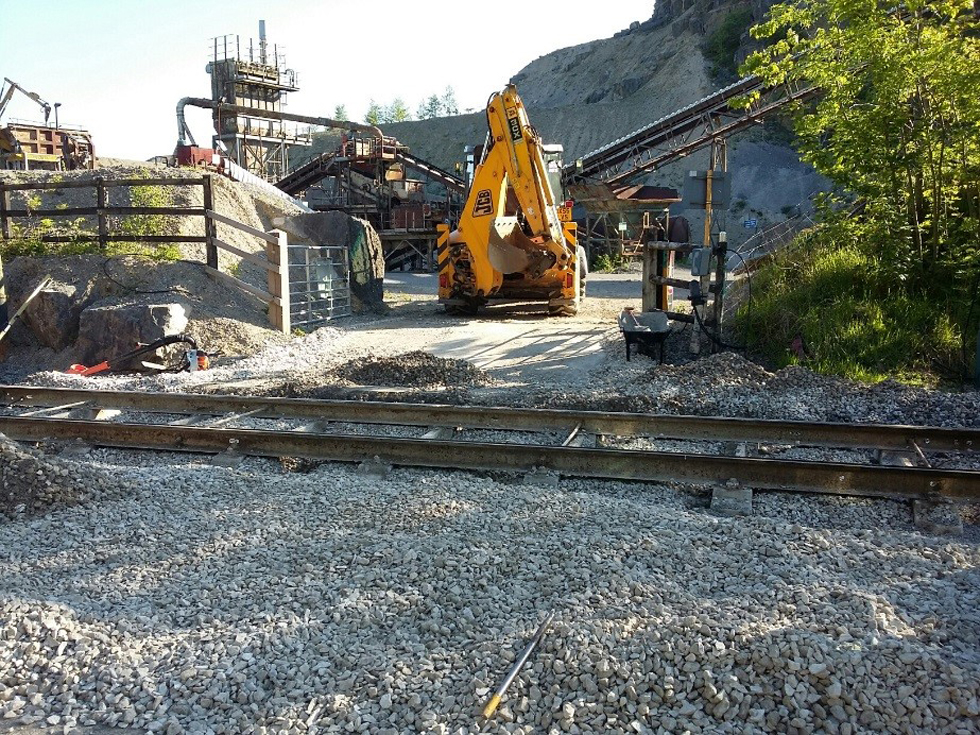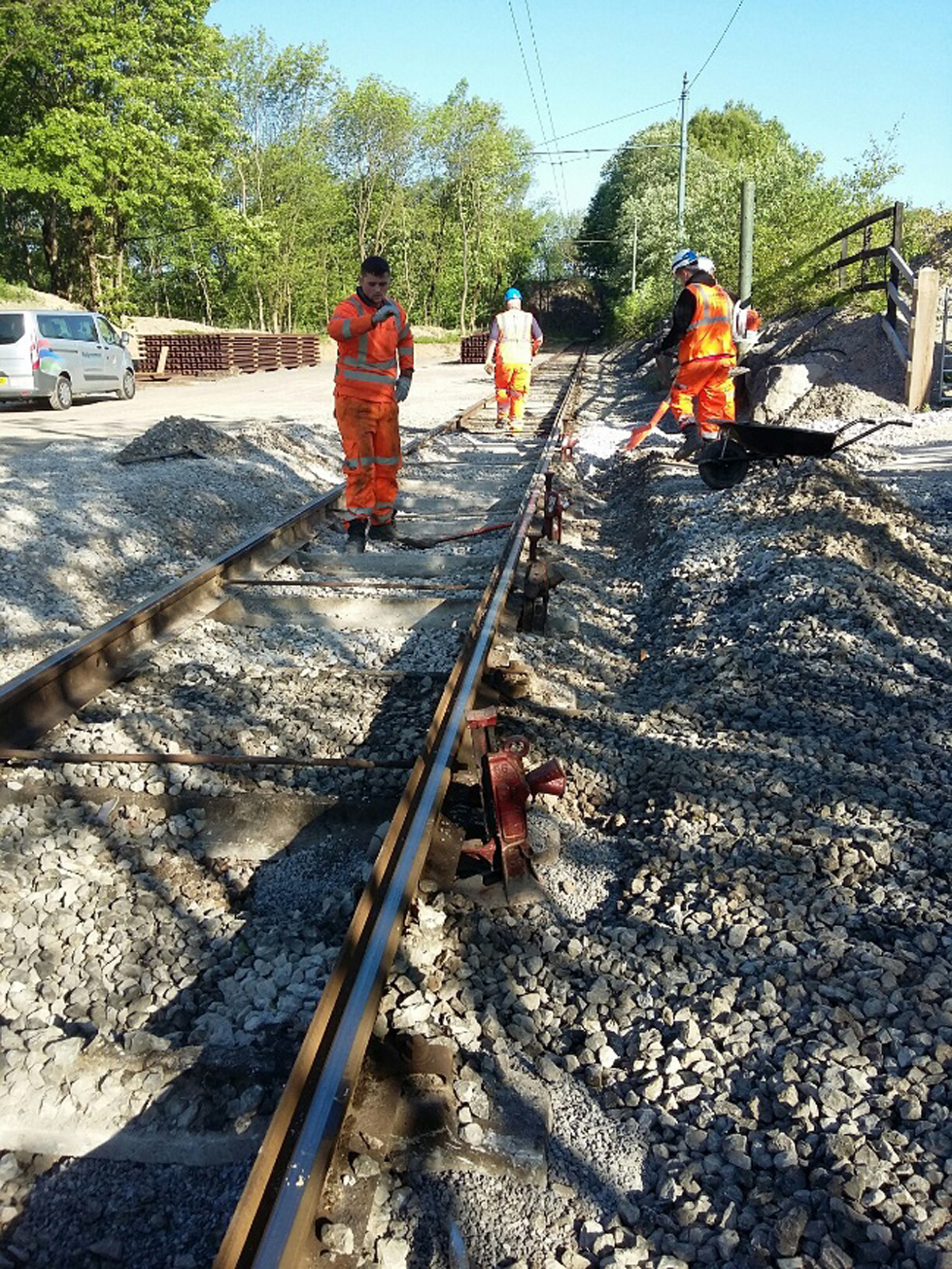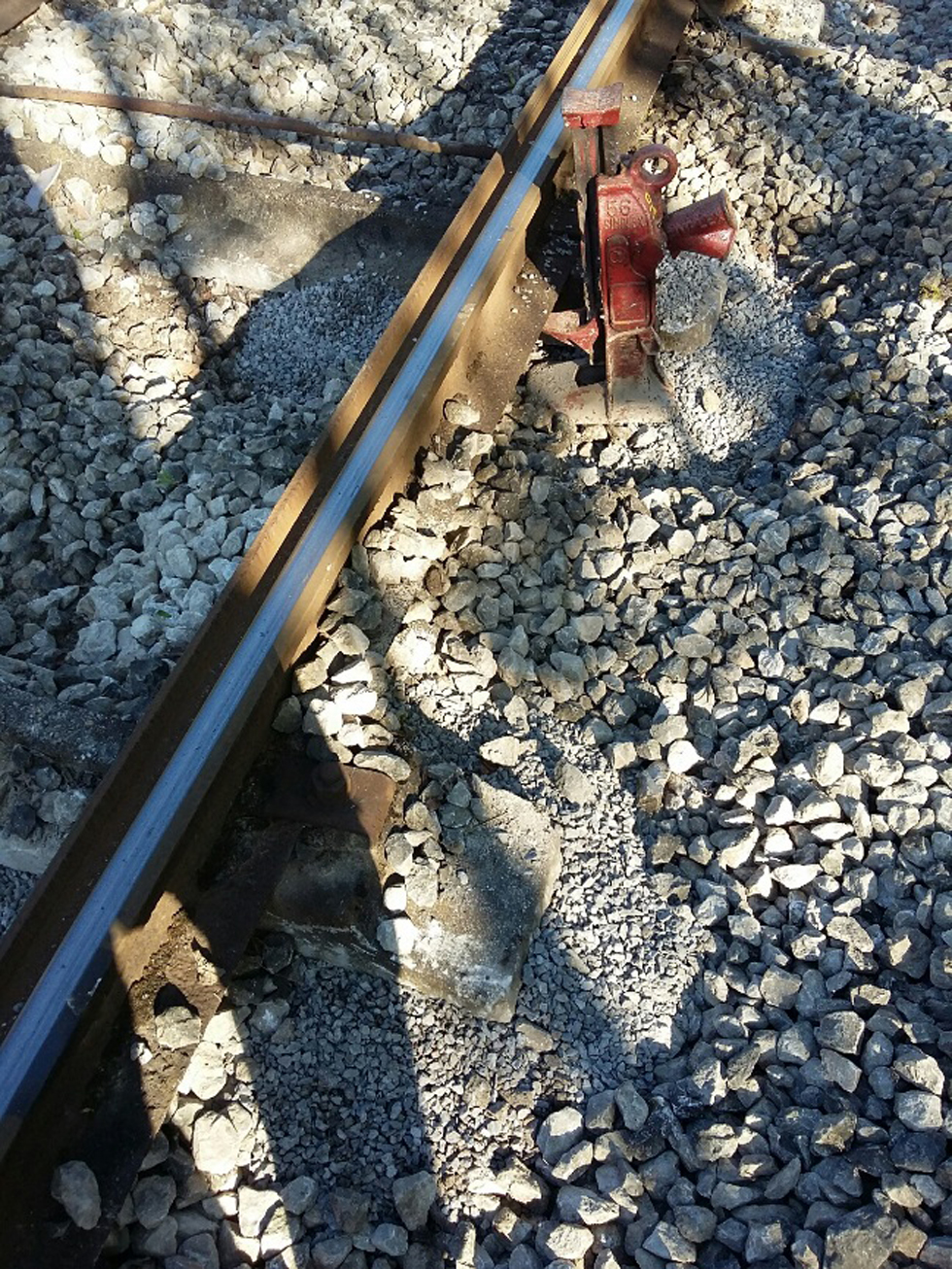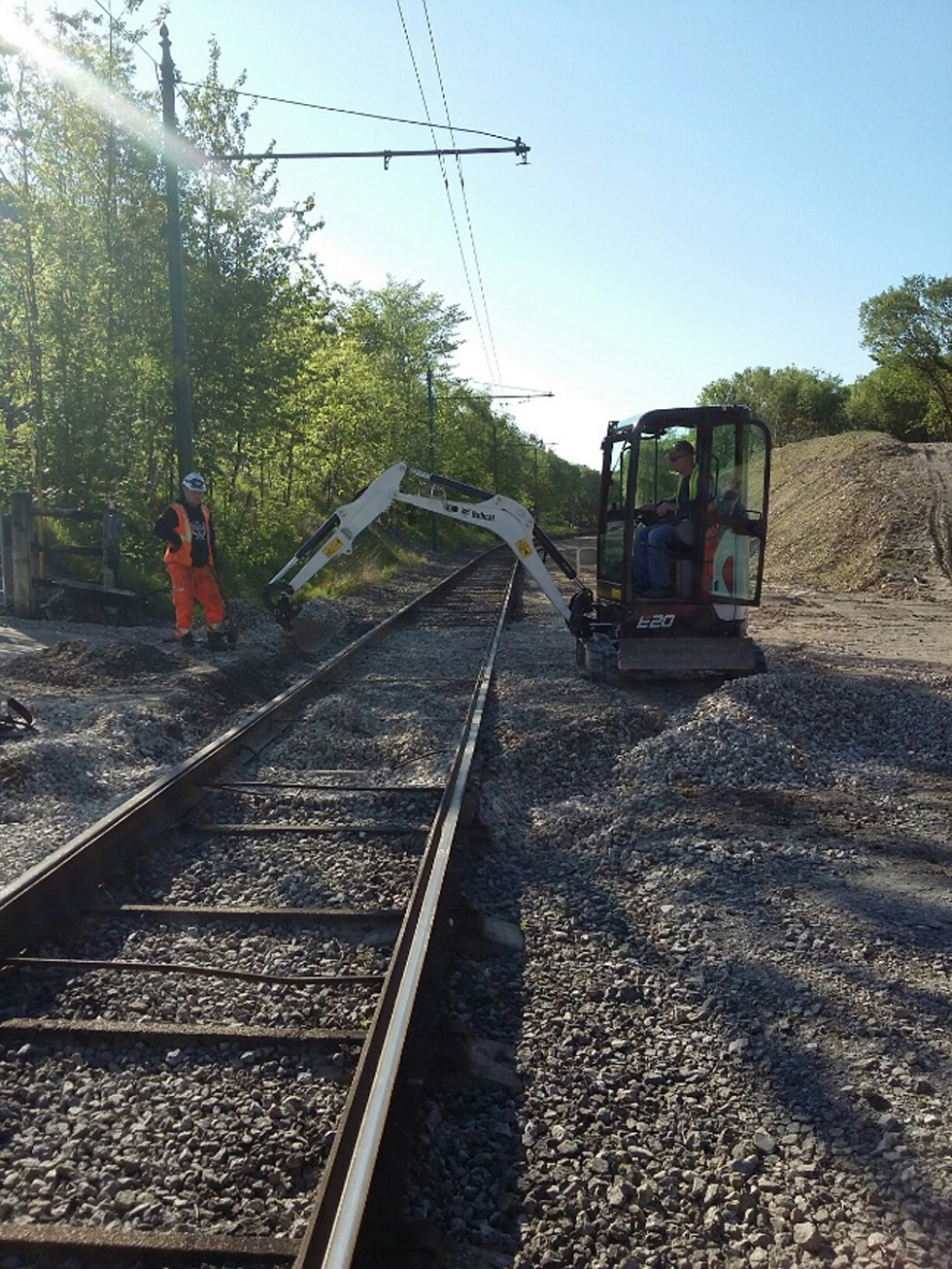
The image above shows excavating a section of the mainline ready for sleeper packing.
To keep the Museum’s mile long demonstration tramway operational, a huge variety of tasks take place behind the scenes which are normally never seen by the visiting public.
For two days this week the focus has been to improve a 150m length of the permanent way infrastructure south from our Wakebridge tram stop. Much of our mainline is made up of trackwork salvaged from original first-generation tramways and regular maintenance is required to keep it in good order.
The issue to be addressed was reducing the vertical movement of sleepers as a loaded tramcar passes over, a phenomenon known as ‘pumping’. Over time and use ballast degrades, causing the rail head height to become uneven. When this occurs the cross level or ‘cant’ between the two rails can shift off level. It is important for good quality trackwork that cant is kept to zero except on curves, and so our permanent way team measure cant with a track gauge at 2m & 10m intervals.
The difference between these two measurements should be as close to zero as possible on good quality trackwork. Where a different, or sometimes in extreme cases opposite, cant is recorded the difference in measurements is called ‘twist’. Twist signifies not only a poor quality of ride but depending on a tramcars suspension can result in one wheel set unloading at speed causing a loss of adhesion or the potential for derailment. Therefore, it is important that twist is monitored regularly and intervention works take place.

Cant and height being checked prior to stone blowing.
This work was a collaborate effort between our staff, volunteer and contractors from 1stinrail. An early morning start was required to minimise any potential disruption to the tram service. The first task was to take measurements using void meters under the rail to see how much movement needed to be eliminated. Next the sleeper ends are excavated to allow packing material to be placed underneath. A section of rail is then jacked up to create a void underneath the sleepers and correct height and cant set with the trackgauge

The fresh granite chippings can be clearly seen after packing underneath the sleepers.
Once alignment and heights have been double checked, fine granite chippings are blow into the void underneath the sleepers. The rail head is set at slightly above the measured height so that once the ballast has had time to settle the required levels will be achieved. Lastly, the rail jacks can be removed and following one final check with the trackgauge the formation can be backfilled with fresh ballast.

The realigned section is back-filled.
With the twist reduced to zero and pumping minimised, this section of our demonstration tramway is ready for visitors to enjoy once again. The opportunity was taken to also remove a kink, which had developed in the mainline over one of our ballasted crossings.
As always the task of maintaining our tramway infrastructure continues. We are always looking for new and experienced volunteers to get involved. If you are interested please visit our website: https://www.tramway.co.uk/volunteering/, email volunteering@tramway.co.uk or give us a call on 01773 854321.
